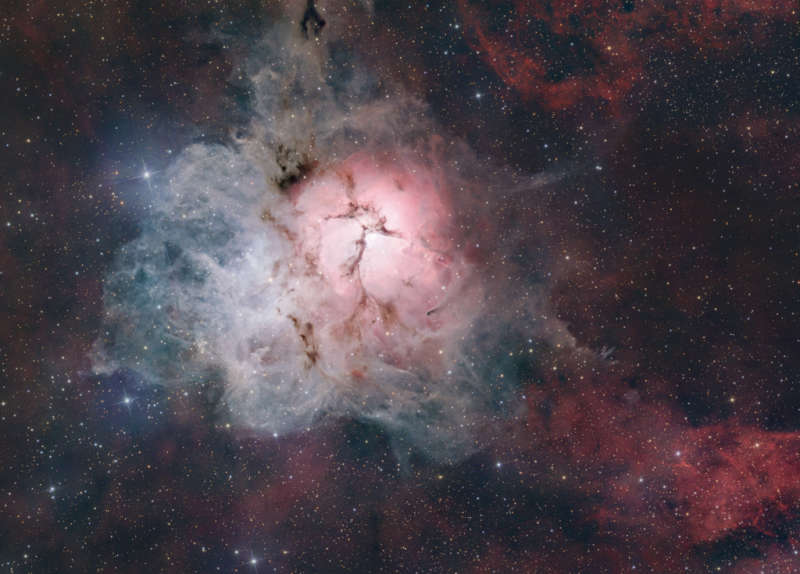
|
Credit & Copyright: Robert Edelmaier and Gabriele Gegenbauer
Explanation:
Messier
20,
popularly known as the Trifid Nebula,
lies about
5,000 light-years away toward the
nebula rich constellation Sagittarius.
A star forming region in the plane of our galaxy,
the Trifid does illustrate three different types of
astronomical nebulae;
red emission nebulae dominated by
light from hydrogen atoms,
blue reflection nebulae produced
by dust reflecting starlight, and
dark nebulae where
dense dust clouds appear in silhouette.
The reddish emission region, roughly separated into three
parts by obscuring dust lanes, is what lends the Trifid its
popular name.
The cosmic cloud complex is over 40 light-years across and would cover the
area of a full moon on planet Earth's sky.
But the Trifid Nebula is too faint to be seen by the unaided eye.
Over 75 hours of image data captured under dark night skies was
used to create this
stunning telescopic view.
Watch: The
Perseid Meteor Shower
|
January February March April May June July August September October November December |
| ||||||||||||||||||||||||||||||||||||||||||||||||
NASA Web Site Statements, Warnings, and Disclaimers
NASA Official: Jay Norris. Specific rights apply.
A service of: LHEA at NASA / GSFC
& Michigan Tech. U.
Based on Astronomy Picture
Of the Day
Publications with keywords: Trifid nebula - M 20
Publications with words: Trifid nebula - M 20
See also:
